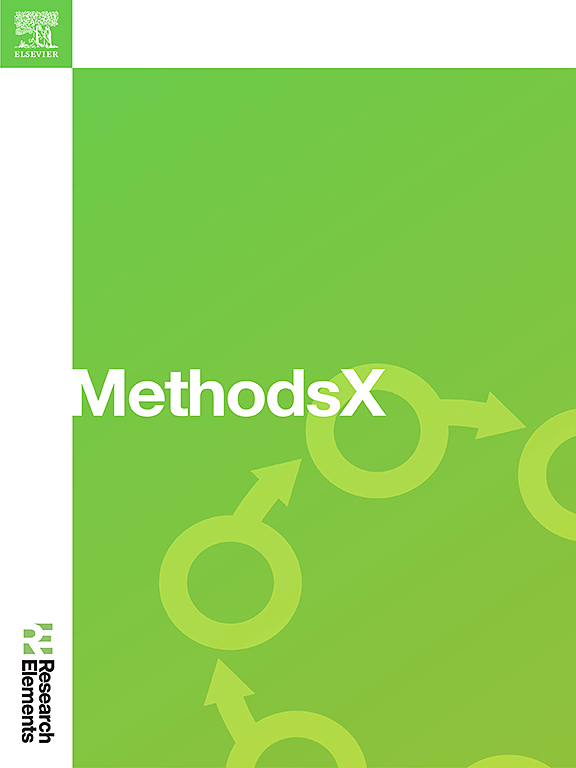Enhancing protein signal detection in asexual and viviparous pea aphids: A guided protocol for tissue dissection and proteinase K treatment
IF 1.6
Q2 MULTIDISCIPLINARY SCIENCES
引用次数: 0
Abstract
Aphids, as hemipteran insects, reproduce via parthenogenesis and viviparity, resulting in rapid and exponential offspring production. To investigate the molecular mechanisms underlying parthenogenetic viviparity in asexual aphids, precise protein detection through immunostaining is essential. Our previous research demonstrated the need for proteinase K (PK) treatment to improve tissue permeability, enabling antibodies targeting the germ-cell marker Ap-Vas1 to access gastrulating and later-stage embryos. However, optimal PK digestion protocols have not been thoroughly explored. In this study, we propose strategies to optimize PK digestion conditions for early, middle, and late-stage pea aphid embryos, which have varying tissue thicknesses. Additionally, we extend the application of PK treatment to salivary glands, a representative somatic tissue, by optimizing conditions for antibody penetration against the salivary gland marker C002. To enhance spatial precision in signal detection, we provide a detailed protocol for tissue dissection specific to pea aphids, focusing on the preservation of tissue integrity. These comprehensive guidelines, covering tissue dissection and PK titration, are expected to improve the specificity and intensity of protein signals in pea aphids and other aphid species.
- •Provide aphid-specific dissection methods to obtain intact embryos and salivary glands.
- •Present strategies for optimizing PK treatment conditions across different tissue types.

加强对无性和有性豌豆蚜虫蛋白质信号的检测:组织解剖和蛋白酶 K 处理指导方案
蚜虫是一种半翅目昆虫,通过孤雌生殖和胎生繁殖,其后代繁殖迅速且呈指数增长。要研究无性蚜虫孤雌生殖的分子机制,必须通过免疫染色法精确检测蛋白质。我们之前的研究表明,需要用蛋白酶 K(PK)处理来提高组织的通透性,使针对生殖细胞标记物 Ap-Vas1 的抗体能够进入胚胎期和后期胚胎。然而,最佳的 PK 消化方案尚未得到深入探讨。在本研究中,我们提出了针对组织厚度不同的早期、中期和晚期豌豆蚜胚胎优化 PK 消化条件的策略。此外,我们还通过优化唾液腺标记物 C002 的抗体渗透条件,将 PK 处理扩展到唾液腺这一代表性体细胞组织。为了提高信号检测的空间精确度,我们提供了豌豆蚜特有的详细组织解剖方案,重点是保护组织的完整性。这些涵盖组织解剖和 PK 滴定的综合指南有望提高豌豆蚜和其他蚜虫物种蛋白质信号的特异性和强度。
本文章由计算机程序翻译,如有差异,请以英文原文为准。
求助全文
约1分钟内获得全文
求助全文
来源期刊

MethodsX
Health Professions-Medical Laboratory Technology
CiteScore
3.60
自引率
5.30%
发文量
314
审稿时长
7 weeks
期刊介绍:
 求助内容:
求助内容: 应助结果提醒方式:
应助结果提醒方式:


